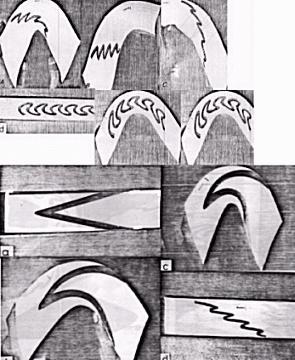SUPERIMPOSED FOLDING
An orogenic belt contains several episodes of deformation and these give rise to extremely complex outcrop patterns. But it is easy to work out their exact chronology by observing rotations of minor structures such as cleavage or linear structures or by observation of refolded minor folds. Since an orogen may contain structures of several generations, it produces complex outcrop patterns but these are always strongly developed in some areas and weakly developed in others and this helps to draw the whole picture or deformation history. In the discussion of superimposed folding, the different fold sets are generally referred to as F1, F2, F3 etc. F1 being the earliest. The subscript in the form of a numeral indicates the generation or a particular episode. In such discussion we are only concerned with the outcrop patterns of folding where only two fold sets are involved. The outcrop patterns that develop because of interference of two fold sets have been divided into three principal types by Ramsay (1967) and these are referred to as type 1, type 2 and type 3. Originally these were developed for "similar" folds but can be used for parallel folds as well. The geometric forms are based on attitude of fold elements of each of the two generations involved.
SUPERIMPOSED FOLDING EXPERIMENTS, GHOSH
